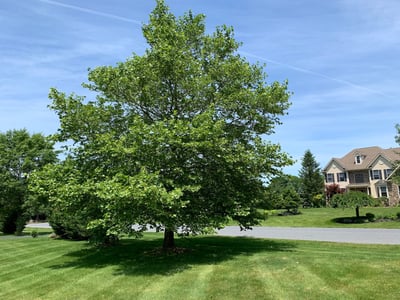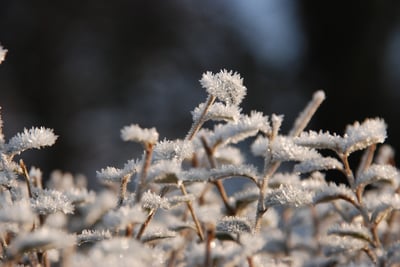

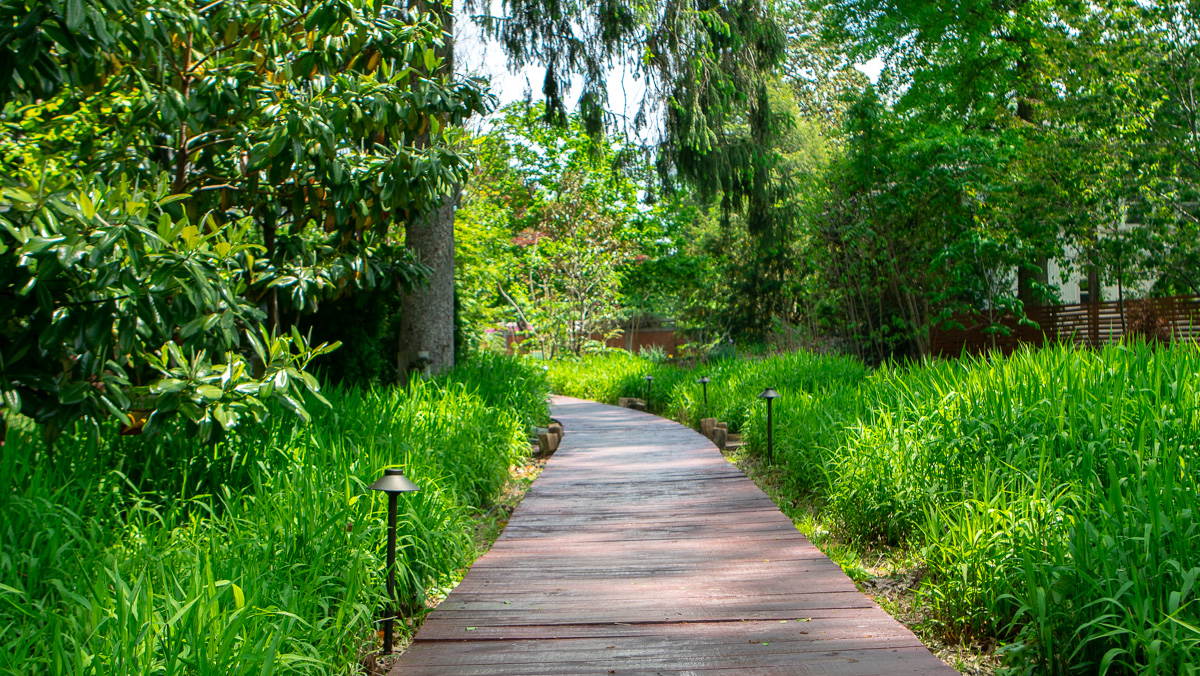
The landscaping around your Louisville home is a big reason why you enjoy being outside and using your property. But plant pests can be lurking right under your nose, sucking the life out of your beloved plants.
Unfortunately, there are more than 55 common plant pests in Louisville that can cause trouble.
In this article, we’ll tell you how to identify plant bugs that need to be on your radar. It’s important to identify plant bugs early on, before they have a lot of opportunity to do damage. If given the chance, plant bugs can end up decimating your trees, shrubs, or landscape plants.
Common plant pests in Louisville
Signs of a plant bug infestation
Plant pest identifier: How to identify plant bugs
Tackling plant pests on your own
Why choose professional plant health care in Louisville
Selecting plant health care in Louisville
As we’ve mentioned, there are more than 55 plant bugs that commonly show up in Louisville. Some pests are more of a problem than others.
The ones that tend to cause issues for homeowners and that we commonly talk about treating include:

How do you know that one (or more) of these plant bugs is causing problems in your landscape?
There are generally signs that you have pests eating your plants. Before we get into how to identify plant bugs, let’s talk about how to know if you already have a problem with them.
The most obvious and tell-tale sign of a plant bug infestation is chewed foliage. Certain plant bugs do directly munch on your leaves. Japanese Beetles are a common culprit of this.
You might notice that leaves look irregular in shape or have identifiable chewing marks on them. Some pests will completely skeletonize the leaf, leaving only the veins behind. But different pests can have different chewing patterns. It also depends on how many pests you have and how long they’ve been feasting.

Maybe your leaves haven’t been chewed, but you notice they’re turning colors (outside of the typical color changes of the autumn season). Typically, with a pest infestation, leaves will turn yellow or lose their vibrancy.
Of course, this can also be an indicator of another problem, like drought stress or even disease. But it’s definitely a sign that something is wrong.
The appearance of a sticky substance on the leaves can also be the sign of a pest infestation. This sticky material is something called “honeydew.” It is the sugary waste of pests, like aphids or scale, that feed on your plant juices.
These pests suck the plant sap directly from the tree or shrub and leave honeydew behind as an excretion.
Sometimes you don’t notice the honey dew itself but instead notice an increase in pests like ants, wasps, and flies which are attracted to this sugary substance. Eventually, honeydew left on your plants can lead to the growth of black sooty mold.
Leaf spots can also be a clue that you have to identify plant bugs in your landscape. But leaf spots can also be a sign of a plant disease, often a fungal infection.
As a rule of thumb, plant bugs tend to create leaf spots that are tan or white while fungal infections create leaf spots that are yellow, black or brown. But as with anything, there can be exceptions.
Still, if you find that your foliage is suddenly covered in spots, it’s worth exploring what’s going on as this is a common sign of a problem.
Leaves dropping outside of their typical “dropping season” in the fall is also a major sign of trouble. As foliage dies from insect damage, it can shrivel up and detach from your trees, shrubs, and landscape plants.
Holes in the bark (and often the saw dust left behind) are another telltale sign of plant bugs. In this case, the culprit is a wood-boring insect. Various insects tunnel into the bark itself and cause damage in the process. This boring activity can interrupt the tree’s vascular system.
Distorted foliage is another sign that you have some plant bugs to identify. Some trees are sensitive to the saliva that is injected from pests that use their piercing, sucking mouthparts to feed. This can lead to distorting leaves that wilt and curl.
In addition, foliage can become stippled from losing their vital plant juices when feeding pests suck them out.
Another sign of a plant bug infestation is cottony white masses. Pests like aphids and scale can sometimes appear as cottony masses as can pest eggs. Of course, the appearance of cottony masses can also be fungus growing so it’s important to get to the bottom of what’s really going on.
So, how do you make a plant pest id? Since so many of these pests are tiny, the process usually does start with identifying signs of problems in your trees and shrubs (as discussed above).
But let’s talk about some of the specifics of each of these common pests.
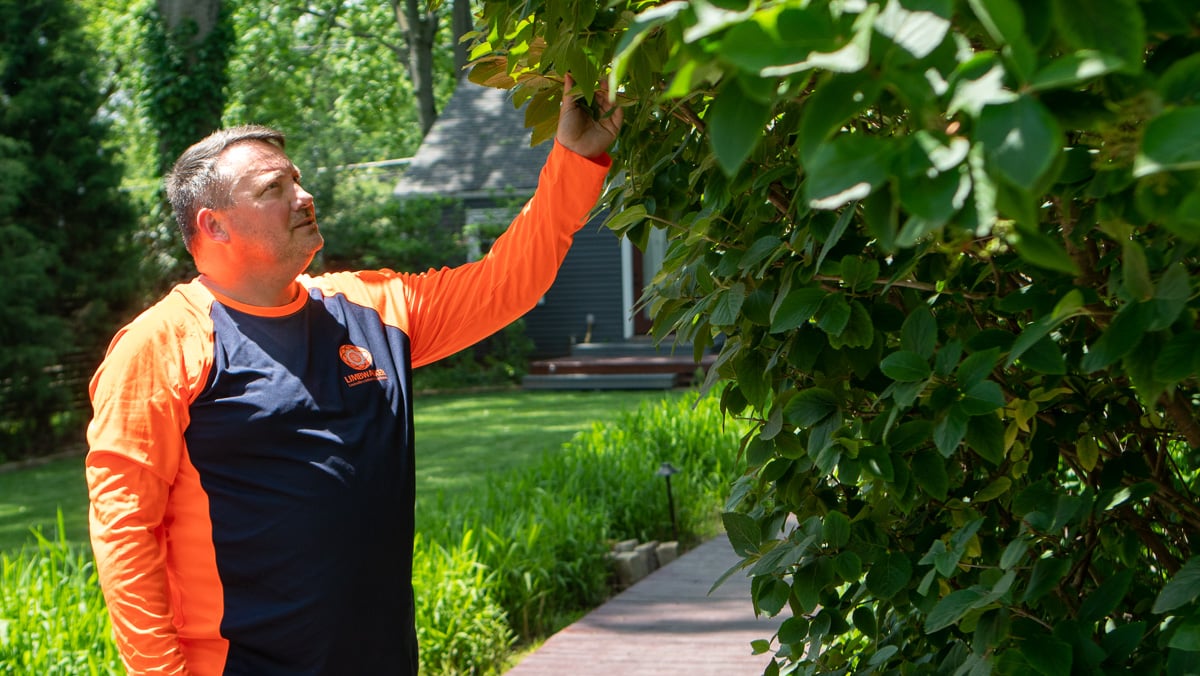
Aphids are small pear-shaped tree bugs that appear in white, black, green, or brown. They can cause problems for your trees as they tend to feed in groups. They also prefer to feast on new growth.
Aphid damage usually shows up as yellowing (as plant juices are sucked from your landscape). You might also notice signs of honeydew and sooty mold.
Trees can have good mites and bad mites. The “good mites” are those that are beneficial to the tree because they eat bad mites, like Spider Mites. Spider Mites are aggressive tree bugs that cause a lot of damage by sucking the cell content out of leaves. They are tiny but highly destructive.
Spider Mite damage can show up as discoloration, stippling, and premature leaf drop. Sometimes you might also notice the webbing of the Spider Mites, particularly with large quantities.
Bagworms are a highly identifiable pest, even to the average homeowner, since the “bag” that they hang in is relatively large (and noticeable). Bagworms construct these bags from pieces of the tree’s foliage (plus their own silk).
Bagworm damage tends to show up as browning of foliage or an overall decline. But because they are a larger-sized pest, homeowners will likely notice the bagworms themselves.
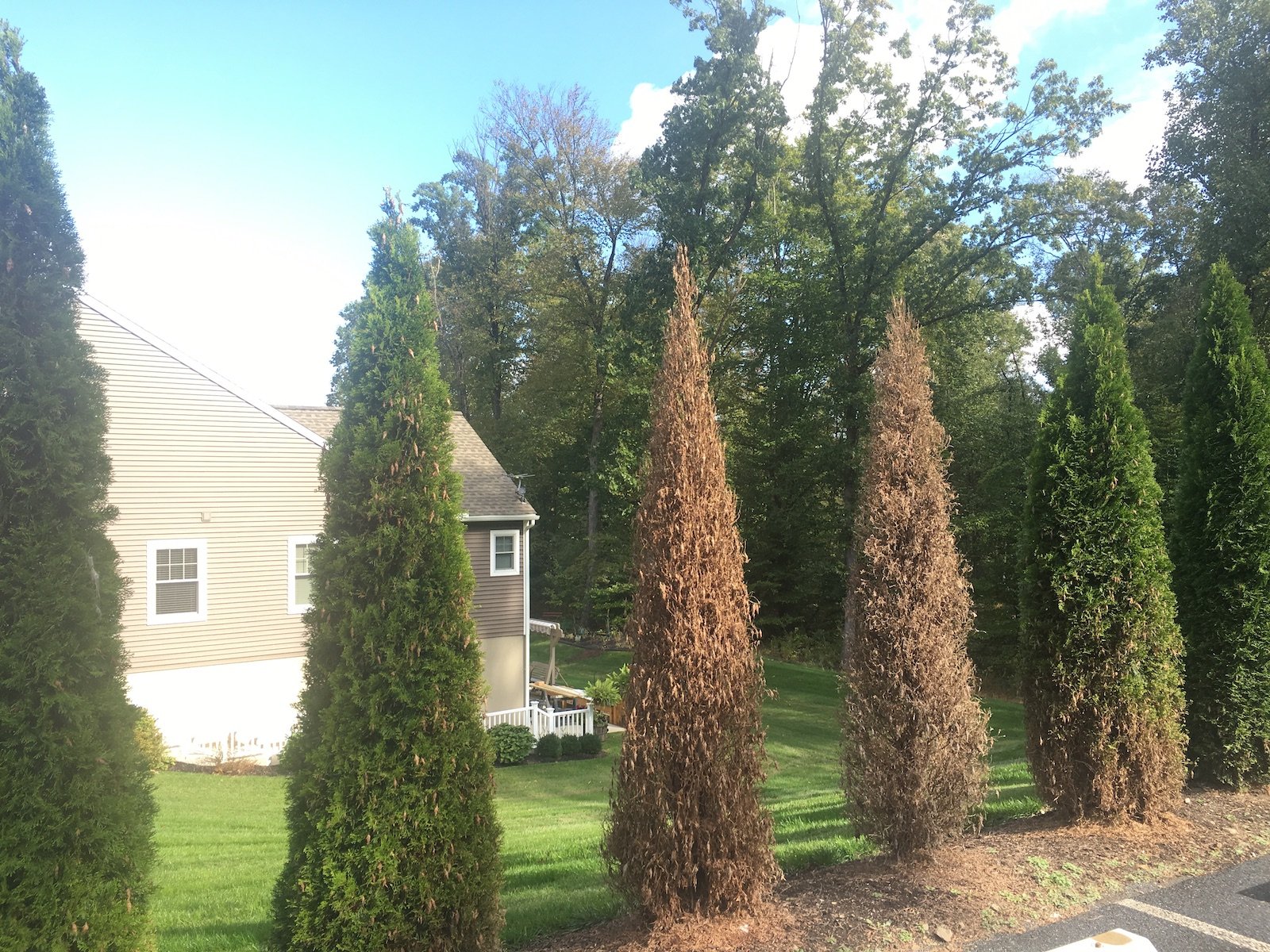
Japanese beetles are another pest that is large enough that people tend to spot them. They have a shiny green head with copper wings.
Unfortunately, if you have seen one Japanese Beetle on your tree, there are likely to be many more. That’s because when this pest finds a good place to eat, it releases a pheromone to alert friends. The Japanese Beetle is a pest throughout its entire lifecycle.
They start life as grubs (that feast on your lawn) and turn into adults that feast on tree leaves. This damage shows up as obvious chew marks. Some leaves may even be fully skeletonized with only the veins left behind.
The EAB are borer beetles that arrived from Asia back in the 1990s and have become a significant problem as they feast on North American native Ash trees. These pests act quickly and can be incredibly destructive.
Emerald Ash Borers are large in their adult form and you may spot them. They are metallic green with a purplish-colored abdomen.
Aside from noticing the pest itself, you might also notice their damage to the bark. These show up as D-shaped exit holes left behind when adults leave the tree. Or, you might notice S-shaped tracks caused by the boring motion they make when feeding.
Sometimes homeowners also report seeing woodpeckers in their trees as they like to feed on EAB and other boring insects.
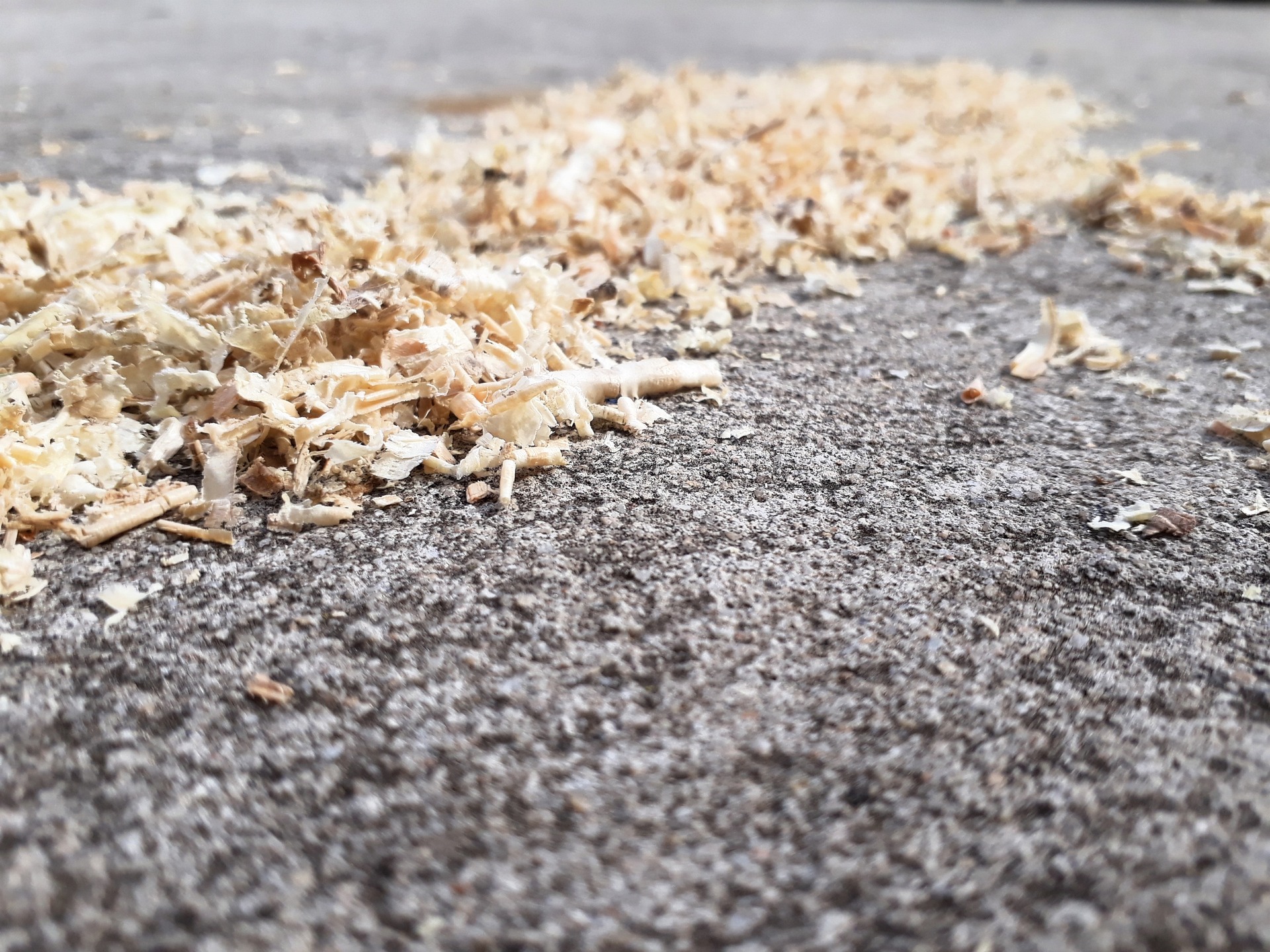
These pests have flattened bodies and a lace-like pattern, hence their name. This is another pest that uses their piercing, sucking mouthparts to feed on your plant juices. Because Lace Bugs are tiny (about ⅛ inch long), you’re more likely to notice their damage, like foliage distortion, than you are to notice the pests themselves.
Scale is another type of sap-feeding tree pest. Scale insects use their piercing-sucking mouthparts to drain fluid from plants. As this occurs you might notice that your plant leaves are drooping and wilting. Scale will also produce honeydew.
We mentioned Emerald Ash Borer as its own category since it’s such a major problem here in Louisville. But the EAB is not the only borer insect that can cause trouble.
In general, Borer insects are frustrating pests on trees because they can do so much damage as they bore into your tree. If you find holes in your bark, it’s possible that you could have an infestation of Borer insects.
Some of the Borers that we deal with include:
Once you identify plant bugs, you want to take action. There are products sold in the local hardware store that you could use on your own, but these are not going to be as effective as what a professional can apply.
In addition, some homeowners use homemade concoctions like vinegar or dish soap sprays but when you’re talking about pests that multiply quickly and can become a full-blown infestation, you’re not going to have much success with these homemade solutions. You want to make sure you’re implementing an effective approach.

Ultimately, your best way to address these plant bugs is with a plant health care program. Plant health care combines fertilization, pest control, and disease control into a program that will help care for your landscape.
We know that Louisville homeowners don’t always give their plants much thought…unless there is a problem. Then, people want to know what they can do to fix an issue.
This is where plant health services are so valuable. In many cases, plant health care can PREVENT problems from occurring in the first place. That’s a big deal when it comes to addressing common plant pests in Louisville. It’s much better to take a proactive approach and prevent issues than to try to deal with a major infestation. And the earlier a problem is caught, the better.
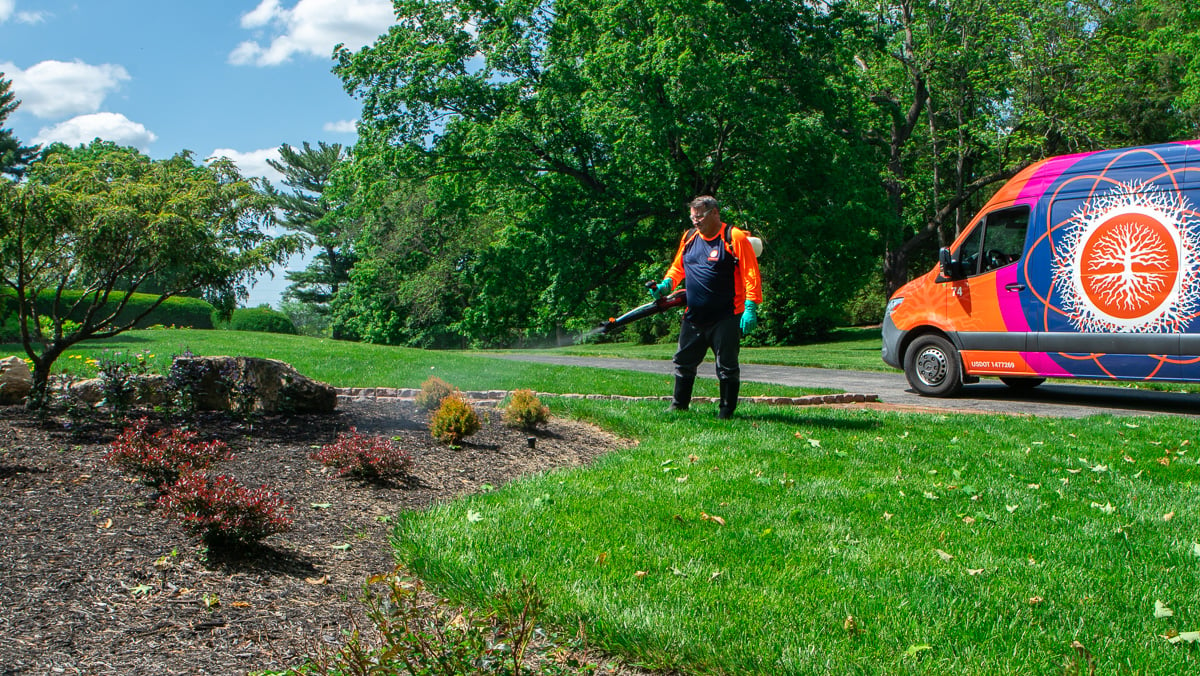
At Limbwalker, we take a proactive approach to tree and shrub care, aiming to prevent problems when we’re able to. We have strong horticultural knowledge and experience, allowing us to make recommendations in regard to what tree pests might be problems on what trees.
We believe that Plant Health Care is a valuable protective measure for your landscape. You never want to lose a tree or shrub, particularly to a problem that could be avoided or treated.
It all boils down to doing what’s best for your Louisville property. You deserve to be able to enjoy your landscape without worries.
If you’d like to learn more about plant health care for your Louisville home, get in touch, get your quote, and get back to enjoying your yard.



